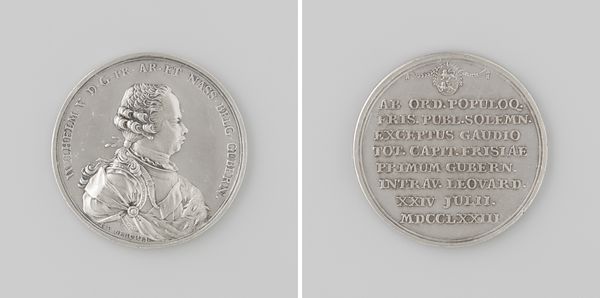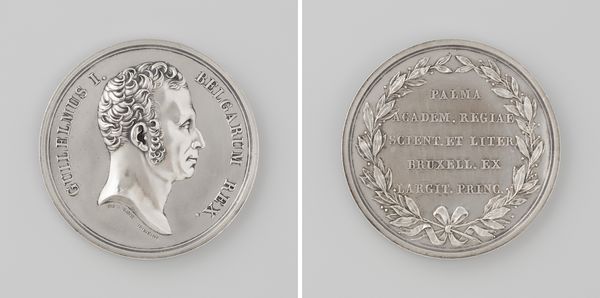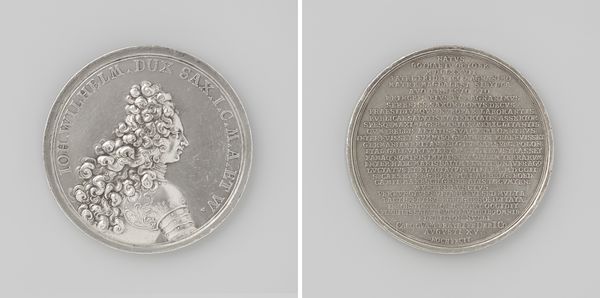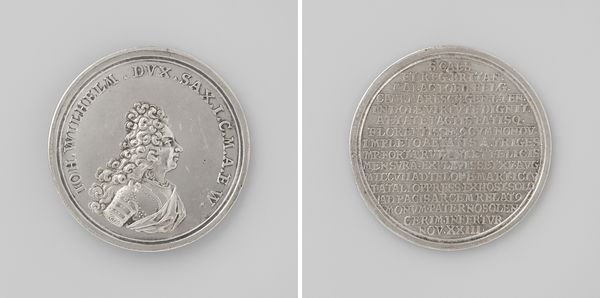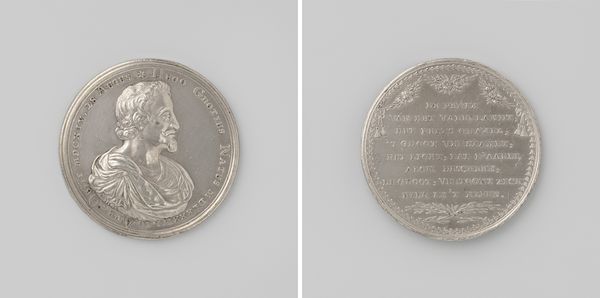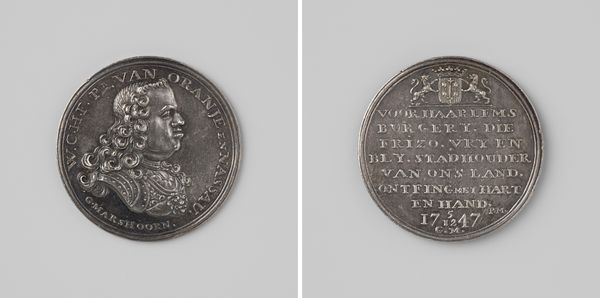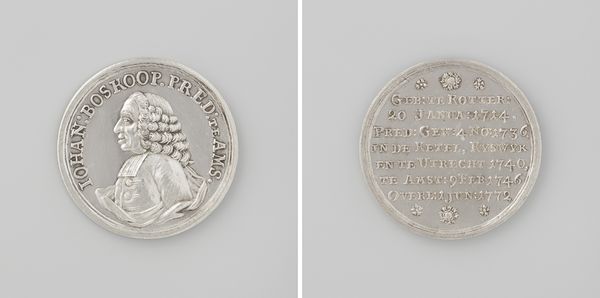
metal, sculpture, engraving
#
portrait
#
medal
#
baroque
#
metal
#
sculpture
#
history-painting
#
engraving
Dimensions: diameter 3.7 cm, weight 17.52 gr
Copyright: Rijks Museum: Open Domain
Curator: Here we have an engraving, a metal sculpture entitled "Overlijden van Willem IV," or "The Death of William IV," dating back to 1751. It's crafted by Andele Andeles. Editor: It has such a cool, stoic formality to it, doesn’t it? Something about the hard, reflective metal makes it seem immutable, like a statement of historical fact etched in stone…or, well, metal! Curator: Well, it IS an engraving, a means of production that was becoming quite standardized in the mid-18th century. Consider the way that the use of metal, with its own inherent qualities of malleability and resistance, plays into the creation of this commemorative piece. This artwork embodies the culture and material conditions surrounding the artist’s labor. Editor: Absolutely! I immediately pick up on how the inscription encircling William’s portrait reinforces his status. It's like the visual language of power, a kind of coded message accessible to those who understand the symbolism. The text itself—those capitalized, dense lines—are just as much a symbol as the man himself. Curator: The lettering provides vital information about his life. “Born September 1711, married Anna, British Princess, Regent, and Governor" These facts underscore the tangible, earthly circumstances of his life. Editor: And that tightly curled baroque hair is such a visual marker of aristocracy. Hair itself becomes an emblem. The rigid text opposite seems designed to anchor that effusive self-presentation, the image and the description of events codifying history in total. Curator: It is a historical painting reproduced on metal. Don’t forget that engravings and sculptures like these also had an intrinsic value related to the value of the materials from which they were crafted, in addition to functioning as political symbols. It reflects broader social and economic structures too. Editor: Seeing all those words clustered on one side really shows me how William IV, the person, got swallowed by the weight of symbolic meaning assigned to him, the constructed persona. It also conveys the importance of memory, preservation, of history becoming a physical object to carry forward. Curator: Indeed, by understanding how artists of the time utilized available technologies and materials to meet particular demands and traditions, we understand what values were literally molded into the object. Editor: So, for me, reflecting on the medal makes clear how powerfully imagery shapes cultural understanding and cements political narratives. Curator: While, conversely, this material serves to remind us that production also underlies the grandest narratives.
Comments
No comments
Be the first to comment and join the conversation on the ultimate creative platform.

